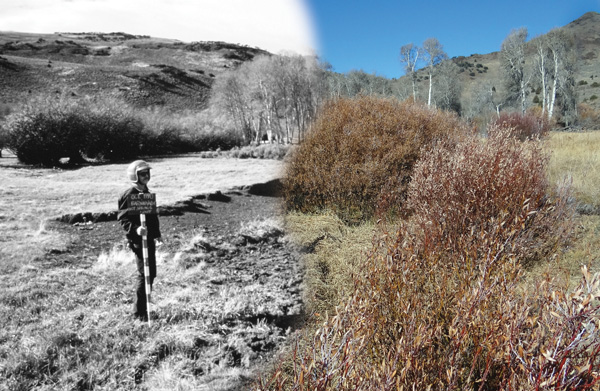The 2010 oil spill in the Gulf of Mexico brought up bad memories for Sarah Allan. The Oregon State University Ph.D. student, who grew up in southeast Alaska, was a child in 1988, when the Exxon Valdez struck a reef and dumped millions of gallons of crude into another rich marine ecosystem, Prince William Sound. Allan remembers sea otters and other charismatic species dying in droves and coastal businesses being devastated.

“I was flabbergasted,” says Allan, who studies toxicology. “I thought, ‘Wow, 20 years later, and we’re doing exactly the same thing.’ It was really depressing to see it happen again, but I’ve been in school for a long time precisely so I can have some positive impact when things like this happen.”
That drive led Allan to Kim Anderson, OSU professor of environmental and molecular toxicology, who investigates compounds known as polycyclic aromatic hydrocarbons (PAHs). Anderson’s lab focuses on where PAHs come from, how they move and are transformed in the environment and what happens when humans and other organisms are exposed to them.
Composed of more than 100 different compounds, PAHs are part of fossil fuels and a product of combustion. Some cause cancer, birth defects and other health problems. To understand these chemicals, Allan melds her biology background with the growing cache of analytical chemistry skills that she is developing in Anderson’s lab.
Crude Consequences
Before going to the Gulf in May 2010, Allan had worked for three years on the Portland Harbor Superfund site. Funded by a $12 million grant from the National Institute for Environmental Health Sciences, Anderson and her crew monitor the effects of historic and modern contamination. They are also measuring the progress of a remediation program.
Allan and other members of the lab went to the Gulf of Mexico to apply their PAH expertise to the expanding oil spill. Since then, the group has made more than half a dozen visits to monitor PAHs in the air and water at four locations from Pensacola, Florida, to Grand Isle, Louisiana.
The OSU researchers watched the disaster unfold first-hand. They saw gobs of oil washing up on the shores of wildlife sanctuaries and cleanup crews working 24 hours a day, rescuers bringing oiled animals to docks to be cleaned and dolphins jumping in oil slicks. They watched the people of the Gulf Coast grow more and more distressed. “You could see the impact on people go from, ‘Well, maybe it won’t be that bad,’ to ‘Should we take a settlement? I’m out of work. What do we do?’” says Allan.
Allan and others on Anderson’s team set up “passive sampling devices,” which they developed to use a membrane that can be “tuned” to detect specific classes of chemicals. Designed to mimic cell membranes and fatty tissues in animals, they represent the potential for biological exposure. Back at the lab in Corvallis, Allan analyzes the samples to determine the concentration of PAHs in the environment. In OSU’s Sinnhuber Aquatic Research Laboratory, she also investigates PAH toxicity by studying how the chemicals affect developing zebrafish embryos.
Communicating science to the public — from park managers to fishermen — is an important task for Allan, especially in a traumatized place like the Gulf. “We have lots of really good scientists doing lots of good work,” says Allan. “But it isn’t usually communicated well. I’d like to be on the communication end of science.”
According to Anderson, Allan would do well in such a role. “It would have been difficult to send a crew to the Gulf without someone with good leadership qualities,” says Anderson, who was not always available to travel with the group. “She understands the big picture.”
On the Web: more from Kim Anderson’s lab on the spill and PAHs





1 Comment
Sarah,
I saw your presentation at SETAC in November and spoke with you briefly afterward. I am very interested in using the technique you’ve developed for spiking PEMD tubing with performance reference compounds. Are you at liberty to share the details of preparing them? I have quite a lot of PEMD tubing, so I just need to know the solvent used, the amount of each PRC you added, and any other helpful details for preparing them.
In any case, my congratulations on an outstanding project and presentation.
Warmest regards,
Jeff Short
907-209-3321